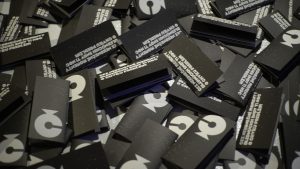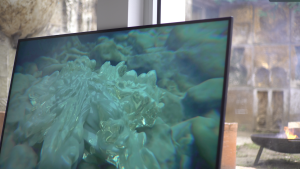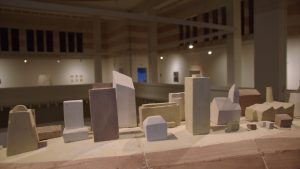Embed
Embed
Práce pre túto výstavu majú východisko v rastlinnej ríši, avšak len po formálnej stránke. Ich podstata tkvie v osobných mytológiách autorky, ktoré sa prelínajú so všeobecnými poznatkami o stavbe rastlín, aby umožnili vzniknúť novotvarom zastupujúcich oba svety.
Keramické objekty, reliéfy, kresby, vystrihované štruktúry z kusov jemnej kože, tvoria spoločne jedinú inštaláciu, ktorá sa snaží zachytiť ohybnosť hranice medzi ľudským svetom a prírodným prostredím.
Inštalácia pre Šamorínsku synagógu nehodnotí náš vzťah k prírode, čerpá z prírodných tvarov, ktoré nás obklopujú a pretavuje ich do nových súvislostí a materiálov. Jej hlavnou inšpiráciou sa stal abstrahovaný tvar semienka, ktorý sa opakuje a množí v každom z vystavených diel.
Výstava SMALL SHAPES je o všadeprítomnej sile prírody, ktorá udržuje rytmus nášho života, a s ktorou sme previazaní viac, akoby sme si mysleli.
Art pieces made for this exhibition have their roots in vegetation and plants, but only at the surface.
Their point lies in the personal mythology of the author, where they meet with general findings of the anatomy of plants, to make a place where new shapes that represent both worlds can be born.
The ceramic objects, reliefs, drawings, and cutouts from pieces of soft leather together create one exhibition that is trying to capture the flexibility of the border between the human world and the natural environment.
The exhibition for the synagogue in Samorin does not judge our relationship with nature. It’s inspired by natural shapes that surround us and shapes them into a new context, connections, and materials. The main inspiration was an abstract shape of a seed, which was planted into every art piece.
The exhibition Small Shapes is about the omnipresent power and might of nature, the force that keeps our life rhythm alive and to which we are more connected than we might initially think















